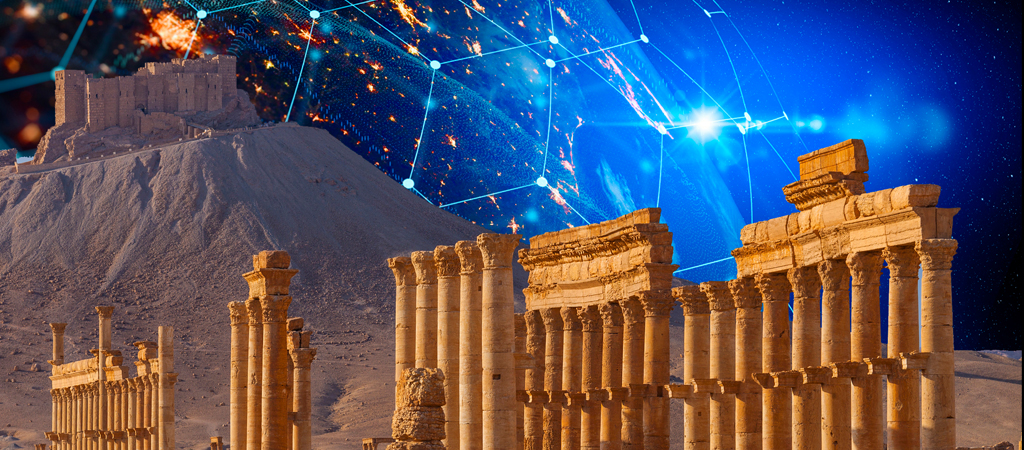Central to our mission at
Science of the Noosphere is an exploration of the modern scientific perspective on how the noosphere evolved and expanded over time, from its origins in small paleolithic human groups to our emerging global civilization. That is the central subject of this conversation between David Sloan Wilson and two experts from different fields, who approach these questions in interestingly complementary ways.
One is
Peter Turchin, author of
War and Peace and War, who founded the field of
Cliodynamics, which uses mathematical modeling of long-term historical processes to look at human history from a more rigorous scientific point of view. It enables more systematic investigation of phenomena such as the rise and fall of empires, population booms and busts, and the spread of religions. Peter was also instrumental in launching
Seshat, the global history databank, “founded in 2011 to bring together the most current and comprehensive body of knowledge about human history in one place.” That databank is used to “systematically collects what is currently known about the social and political organization of human societies and how civilizations have evolved over time.”
The other is
Daron Acemoglu, co-author with James Robinson of
Why Nations Fail. Daron is an economist who focuses on the role of institutions in human life. The field of
institutional economics acknowledges that while individuals can be seen as rational actors, several factors—such as information asymmetries, economic and environmental externalities, and difficulties with trust—can distort the workings of the neoclassical icon, the
“invisible hand”. These factors must be taken into consideration to understand how society and the economy really work.
In the early stages of the noosphere’s evolution, the novel human attributes Teilhard enumerated—freedom of choice, foresight, the ability to plan and construct—were not functions of individuals, but instead expressed as the collective consciousness of small hunter-gatherer groups. This in turn enabled collective action at a level of complexity the planet had never before seen. The small nomadic bands that our ancestors lived in for hundreds of thousands of years attained the status of superorganisms in their own right. They spread across the entire planet, adapting to virtually every available environment through the power of collective minds. As Teilhard states in
The Formation of the Noosphere:
“Viewed in this aspect, entirely borne out by experience, the collective human organism which the economists so hazily envisage emerges decisively from the mists of speculation to take its place and assume the brilliance of a clearly defined star of the first magnitude in the zoological sky.”
As hunter-gatherer groups proliferated and spread, they developed ever more complex cultural practices and increasingly sophisticated technologies. Group size—the functional level of noospheric organization—remained roughly the same until human innovation led to agriculture. From groups of 25-50 individuals using stone-age technology, they evolved into our global-scale, electronically connected, technological civilization taking its first tentative steps into space. Teilhard enumerated the stages of the noosphere’s growth in the section titled
The Phases and Future of the Noosphere:
“… only seven or eight thousand years ago, there came the first civilizations, each covering a large part of a continent. These were succeeded by the real empires. And so on … patches of humanity growing steadily larger, overlapping, often absorbing one another, thereafter to break apart and again reform in still larger patches. As we view this process, the spreading, thickening and irresistible coalescence, can we fail to perceive its eventual outcome? The last blank spaces have vanished from the map of mankind. There is contact everywhere, and how close it has become! Today, embedded in the economic and psychic network which I have described, two great human blocks alone remain confronting one another. Is it not inevitable that in one way or another these two will eventually coalesce?”
Teilhard wrote
The Formation of the Noosphere in 1947, so we can assume the “two great human blocks” he referred to in that passage were the Soviet Union and Western democracies. When the Soviet Union collapsed three decades ago, many predicted that a global coalescence under democratic governance was inevitable. While economic and digital globalization has continued apace, political and social coalescence has failed, so far, to take place.
In this conversation, David, Peter, and Daron explore the growth of the noosphere from its origins to the present day. How did we get from here to there? Where are we going, as a species, from this point forward?
